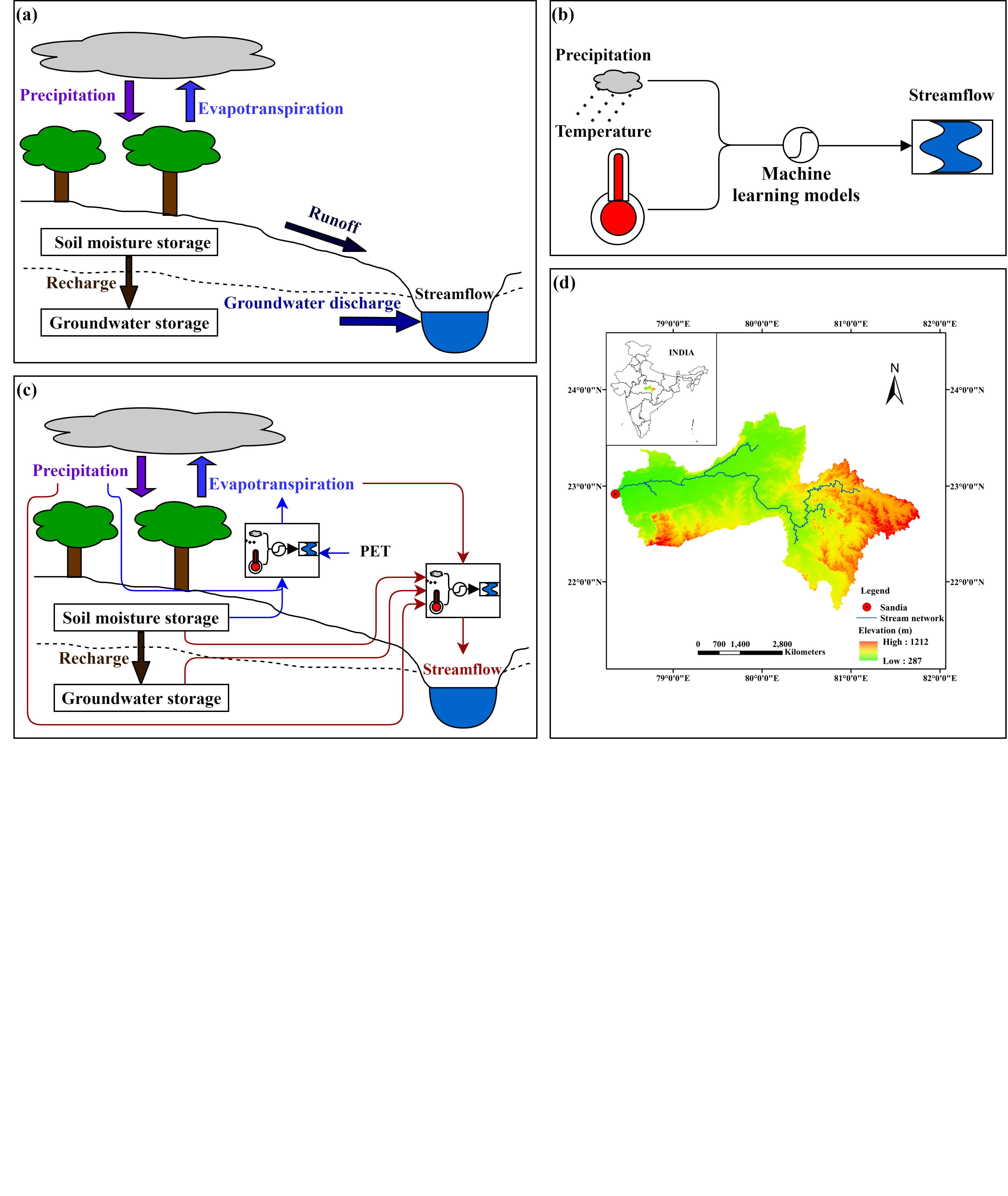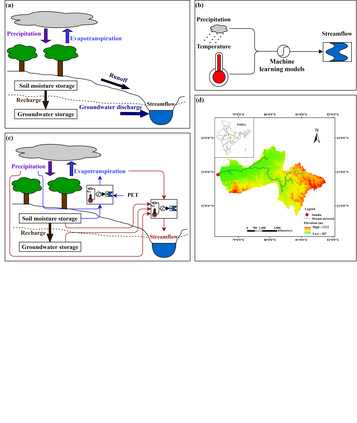Current modeling approaches for hydrological modeling often rely on either physics-based or data-science methods, including Machine Learning (ML) algorithms. While physics-based models tend to rigid structure resulting in unrealistic parameter values in certain instances, ML algorithms establish the input-output relationship while ignoring the constraints imposed by well-known physical processes. While there is a notion that the physics model enables better process understanding and ML algorithms exhibit better predictive skills, scientific knowledge that does not add to predictive ability may be deceptive. Hence, there is a need for a hybrid modeling approach to couple ML algorithms and physics-based models in a synergistic manner. Here we develop a Physics Informed Machine Learning (PIML) model that combines the process understanding of conceptual hydrological model with predictive abilities of state-of-the-art ML models. We apply the proposed model to predict the monthly time series of the target (streamflow) and intermediate variables (actual evapotranspiration) in the Narmada river basin in India. Our results show the capability of the PIML model to outperform a purely conceptual model ($abcd$ model) and ML algorithms while ensuring the physical consistency in outputs validated through water balance analysis. The systematic approach for combining conceptual model structure with ML algorithms could be used to improve the predictive accuracy of crucial hydrological processes important for flood risk assessment.
翻译:目前的水文模型模型方法往往依赖物理模型或数据科学方法,包括机器学习算法。物理模型倾向于僵化结构,在某些情况下导致不切实际的参数值,而数学模型则建立输入-输出关系,而忽视众所周知的物理过程造成的限制。虽然有一种概念,即物理模型有助于更好地了解过程,而ML算法表现出更好的预测技能,但不能增加预测能力的科学知识可能是欺骗性的。因此,有必要以协同方式对混合ML算法和物理模型采用混合模型。在这里,我们开发了一个物理智能机器学习模型,将概念水文模型的过程理解与最新工艺模型的预测能力结合起来。我们采用拟议的模型来预测印度纳尔马达河流域的目标(流)和中间变量(实际蒸发性呼吸能力)的每月时间序列。我们的结果显示,PIML模型有能力超越一个纯粹的概念模型(美元)和基于物理学模型的模型(ML)的准确性分析,同时确保将模型的准确性模型与系统化的准确性分析结合起来,同时将模型用于对模型的准确性分析。






